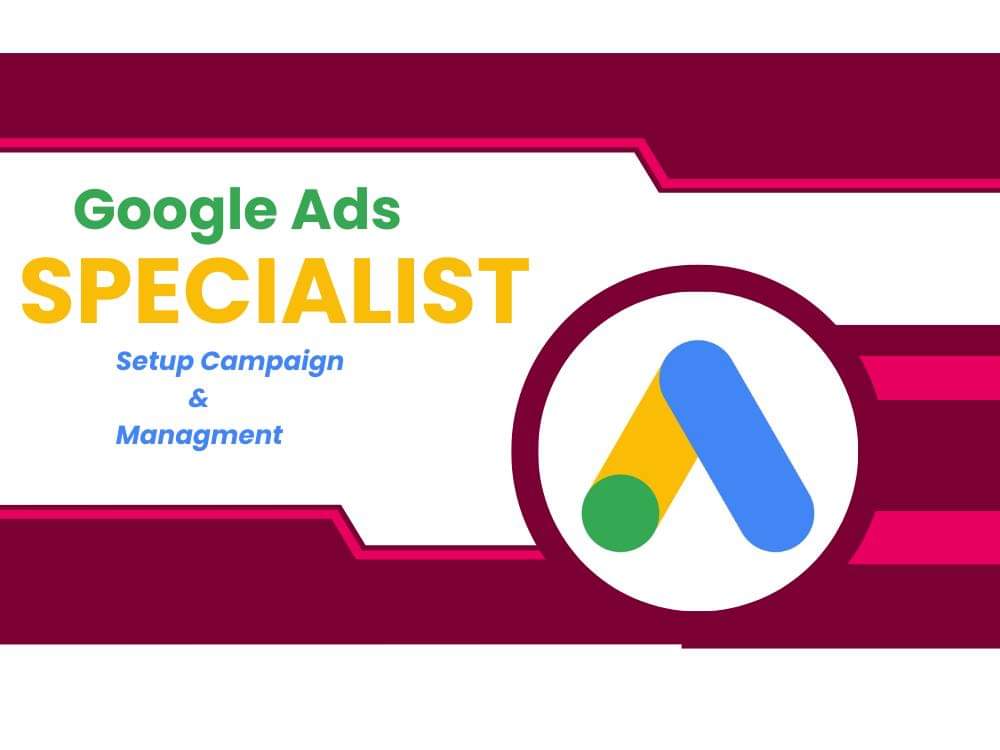Mastering Google Ads: A Comprehensive Guide from Keyword Research to Ad Creation
Understand Google Ads From Keyword Research to Ad Creation

Mastering Google Ads: A Comprehensive Guide from Keyword Research to Ad Creation
Introduction:
Google Ads is a powerful platform that enables businesses to reach their target audience and drive valuable traffic to their websites. To make the most of this advertising platform, it’s essential to understand the entire process, from conducting keyword research to creating compelling ads. In this comprehensive guide, we will take you through each step to help you unlock the full potential of Google Ads and achieve your marketing objectives.
What is Google Ads
Google Ads is a paid advertising platform that allows businesses to place their ads on Google’s search engine results page (SERP), Google Maps, Google Shopping, and other Google partner websites. It is a cost-effective way for businesses to reach their target audience and increase their online visibility. With Google Ads, you can create ads that are relevant to your target audience and display them to users who are searching for specific keywords related to your business.

Step 1: Conducting Keyword Research Keyword research forms the foundation of any successful Google Ads campaign. Start by brainstorming relevant terms and phrases that potential customers might use to find your products or services. Use tools like Google Keyword Planner to discover high-traffic and low-competition keywords. Prioritize long-tail keywords for better targeting and consider negative keywords to exclude irrelevant searches.
Step 2: Structuring Your Campaigns Organize your Google Ads account into well-structured campaigns and ad groups. Each campaign should target a specific product or service, while ad groups within each campaign should contain closely related keywords. This structure helps to maintain relevance and improve the quality score of your ads.
Step 3: Crafting Compelling Ad Copies Create ad copies that captivate your target audience and align with their interests. Highlight unique selling points (USPs) and use relevant keywords in your headlines and descriptions. Include a strong call-to-action (CTA) that prompts users to take the desired action, whether it’s making a purchase or signing up for a newsletter.
Step 4: Understanding Ad Extensions Ad extensions provide additional information and enhance the visibility of your ads. Utilize site links, callouts, structured snippets, and other extensions to provide more context and encourage clicks. Ad extensions not only improve click-through rates (CTR) but also improve your ad’s overall quality.
Step 5: Optimizing Landing Pages Optimize your landing pages to ensure a seamless user experience and encourage conversions. Match the content of your landing page with your ad copy to provide a cohesive experience. Optimize for mobile devices, improve page load speed, and use trust signals like testimonials and security badges to build credibility.
Step 6: Setting Budgets and Bids Determine your daily or monthly budget for each campaign and set maximum bids for your keywords. Be strategic in allocating your budget to campaigns that align with your marketing goals. Regularly monitor and adjust bids based on performance to maximize the effectiveness of your ads.
Step 7: Monitoring and Analyzing Performance Keep a close eye on the performance of your Google Ads campaigns. Use tools like Google Analytics to track user behavior, conversion rates, and other key metrics. Analyze the data to identify areas for improvement and make data-driven decisions to optimize your campaigns further.
Step 8: A/B Testing and Continuous Improvement Continuously test different ad variations, headlines, CTAs, and landing page elements through A/B testing. Experiment with different strategies to determine what resonates best with your target audience. Use the insights gained from testing to refine your ads and improve their effectiveness.
Benefits of advertising on Google
There are many benefits of advertising on Google. For starters, Google is the most popular search engine in the world, with over 90% of the global search engine market share. This means that advertising on Google can help you reach a massive audience. Additionally, Google Ads allows you to target your ads to specific locations, demographics, and interests, making it easier to reach your ideal customer.
Another advantage of Google Ads is that it is a cost-effective advertising method. You only pay when someone clicks on your ad, which means that you are not wasting money on ads that are not generating any clicks. Furthermore, Google Ads provides you with detailed analytics so you can track the performance of your ads and make adjustments as needed.
Google Ads vs. Google AdWords
Google Ads was previously known as Google AdWords. The platform was rebranded in 2018 to reflect the different types of ads that are available on the platform. While Google AdWords was primarily focused on search ads, Google Ads now offers a variety of ad formats, including display ads, video ads, and shopping ads.
Understanding the Google Ads interface
The Google Ads interface can be overwhelming for beginners, but it is relatively straightforward once you get the hang of it. The interface is divided into three main tabs: Campaigns, Ad Groups, and Ads. The Campaigns tab is where you create and manage your campaigns, while the Ad Groups tab is where you organize your ads by theme or product. The Ads tab is where you create and manage your ads.
One of the essential aspects of the Google Ads interface is the Quality Score. The Quality Score is a metric that measures the relevance and usefulness of your ads, keywords, and landing pages. A high-quality score can help you achieve a higher ad position and lower cost-per-click (CPC).
Keyword research for Google Ads
Keyword research is a critical component of any successful Google Ads campaign. You need to identify the keywords that your target audience is searching for and create ads that are relevant to those keywords. Google Ads provides a Keyword Planner tool that allows you to research keywords and estimate their search volume and cost-per-click.
When conducting keyword research, it is essential to focus on long-tail keywords. Long-tail keywords are more specific and have less competition, which means that they are often less expensive and more effective at generating clicks and conversions.
Creating effective Google Ads campaigns
Creating effective Google Ads campaigns requires careful planning and execution. You need to identify your target audience, set clear objectives, and create ads that are relevant and engaging. One of the essential aspects of creating effective Google Ads campaigns is ad copy. Your ad copy needs to be concise, compelling, and relevant to the keywords that you are targeting.
Another important component of creating effective Google Ads campaigns is testing. You should continually be testing different ad formats, headlines, and descriptions to see what works best for your business.
Ad creation and optimization
Ad creation and optimization are critical to the success of your Google Ads campaigns. You need to create ads that are relevant, engaging, and visually appealing. Google Ads provides a variety of ad formats, including text ads, image ads, and video ads.
When creating ads, it is essential to focus on your target audience and the keywords that you are targeting. Your ads should be tailored to the specific needs and interests of your target audience.
Optimizing your ads involves making adjustments to your ad copy, targeting, and bidding to improve their performance. You should continually be monitoring your ads’ performance and making adjustments as needed.
Managing your Google Ads budget
Managing your Google Ads budget is essential to ensure that you are getting the most out of your advertising spend. You need to set a budget that aligns with your business objectives and monitor your spending to ensure that you are not overspending.
One of the essential aspects of managing your Google Ads budget is bidding. You need to bid strategically to ensure that you are getting the best return on investment (ROI). This involves monitoring your ad performance and adjusting your bids accordingly.
Google Ads settings and targeting options
Google Ads provides a variety of settings and targeting options that allow you to reach your ideal customer. You can target your ads by location, demographics, interests, and more. Additionally, Google Ads provides a variety of ad formats, including search, display, video, and shopping ads, that allow you to reach your target audience in different ways.
Frequently asked questions about Google Ads
Here are some frequently asked questions about Google Ads:
What is the minimum budget for Google Ads?
The minimum budget for Google Ads is $1 per day.
How much does Google Ads cost?
The cost of Google Ads varies depending on your industry, keywords, and competition. You only pay when someone clicks on your ad.
How do I track the performance of my Google Ads campaigns?
You can track the performance of your Google Ads campaigns using the Google Ads dashboard. It provides detailed analytics on your ad performance, including clicks, impressions, and conversions.
Courses and resources for Google Ads
There are many courses and resources available to help you learn more about Google Ads. Google offers a variety of free courses and certifications through their Google Ads Academy. Additionally, there are many online courses and tutorials available on platforms like Udemy and Coursera.

Conducting Keyword Research for a Successful Google Ads Campaign
Keyword research is a fundamental step in setting up a successful Google Ads campaign. Understanding the search terms and phrases that potential customers use to find products or services like yours will help you target the right audience and improve your ad performance. Here’s a step-by-step guide to conducting keyword research for your Google Ads campaign:
- Define Your Campaign Goals: Before you start researching keywords, clearly define your campaign goals. Are you looking to drive website traffic, generate leads, increase sales, or raise brand awareness? Understanding your objectives will help you identify relevant keywords that align with your goals.
- Brainstorm Seed Keywords: Begin by brainstorming seed keywords. These are the primary terms or phrases that represent your products, services, or content. Put yourself in the shoes of your potential customers and think about what they might search for when looking for what you offer.
- Use Google Keyword Planner: Google Keyword Planner is a powerful free tool that provides valuable insights into keyword ideas, search volumes, competition, and suggested bids. Enter your seed keywords into the planner to discover relevant keyword suggestions.
- Focus on Long-Tail Keywords: While broad keywords may have high search volumes, they can also be highly competitive. Consider focusing on long-tail keywords, which are more specific phrases that have lower search volume but are often less competitive. Long-tail keywords can lead to higher conversion rates as they match users’ specific intent.
- Analyze Competitors: Research the keywords used by your competitors in their Google Ads campaigns. This can provide additional ideas and help you identify valuable keywords that you may have overlooked.
- Consider Keyword Match Types: Google Ads offers different keyword match types, including broad match, phrase match, exact match, and modified broad match. Understand how each match type works, as they control when your ads are triggered. Use a mix of match types to balance reach and relevance.
- Leverage Negative Keywords: Negative keywords are terms you want to exclude from triggering your ads. Adding negative keywords helps refine your targeting and prevents your ads from showing up for irrelevant searches, saving your ad spend.
- Group Keywords into Themes: Organize your keywords into thematic groups that represent different aspects of your business or offerings. This will help you create focused ad groups later in the campaign setup.
- Use Keyword Research Tools: Consider using third-party keyword research tools like SEMrush, Moz, or Ahrefs to gain additional insights and discover new keyword opportunities.
- Regularly Review and Update: Keyword research is an ongoing process. Continuously review the performance of your keywords and update your list based on user behavior, market trends, and changing business needs.
Conducting thorough keyword research is crucial for the success of your Google Ads campaign. By understanding the search behavior of your target audience and selecting the right keywords, you can create highly relevant and targeted ads that drive valuable traffic to your website. Regularly review and update your keyword list to stay competitive and maximize the effectiveness of your Google Ads campaign. A well-researched keyword strategy sets the stage for a successful and profitable advertising campaign.
Conclusion:
Understanding Google Ads from keyword research to ad creation is vital for running successful and profitable campaigns. By conducting thorough keyword research, crafting compelling ad copies, optimizing landing pages, and monitoring performance, you can drive relevant traffic to your website and achieve your marketing objectives. Stay proactive in adjusting your strategies based on data insights and continuously improve your campaigns to maximize your return on investment (ROI) and make the most of Google Ads’ vast advertising potential.










Hello There
Discount Coupons- http://KuciaKodes.uk